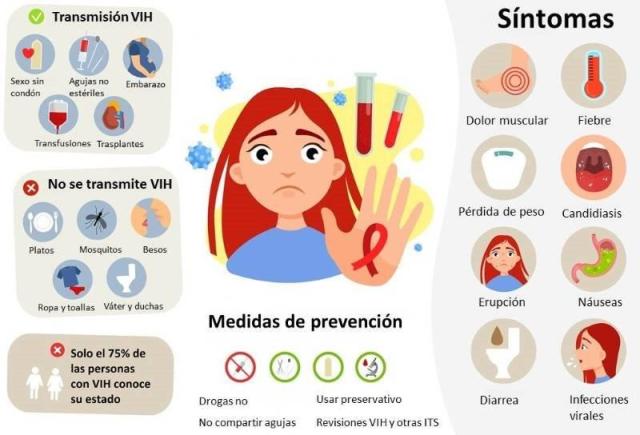
1. Understanding HIV and Its Risks
HIV (Human Immunodeficiency Virus) is one of the most serious viral infections worldwide. It directly attacks the body’s immune defenses, weakening the ability to fight off infections, viruses, and even some cancers. Without medical treatment, HIV advances into AIDS (Acquired Immunodeficiency Syndrome)—the most advanced and dangerous stage. At this point, the immune system is severely compromised, making individuals highly vulnerable to life-threatening illnesses. According to the World Health Organization (WHO), millions of new HIV infections still occur every year, underlining the urgent need for prevention and awareness.
2. How HIV Spreads
HIV is not transmitted through everyday interactions like hugging, shaking hands, sharing food, or insect bites. Instead, the virus spreads through:
-
Unprotected Sexual Contact: The most common route, as HIV is present in semen, vaginal fluids, and blood. Vaginal, oral, and especially anal sex without protection carries high transmission risk.
-
Sharing Needles or Injection Equipment: Using unclean needles for drugs, tattoos, or piercings exposes individuals directly to infected blood.
-
Mother-to-Child Transmission: Pregnant women with HIV can pass the virus to their baby during pregnancy, birth, or breastfeeding. However, modern treatments can lower this risk to nearly zero.
3. The Consequences of HIV
Health Effects
-
Severe immune system damage, leading to opportunistic infections such as tuberculosis, pneumonia, meningitis, or fungal diseases.
-
Shortened lifespan if antiretroviral therapy (ART) is delayed.
-
Neurological issues like memory loss, depression, or other mental health disorders.
-
Reproductive challenges, including infertility and complications in pregnancy.
Social and Psychological Impact
-
Stigma and discrimination discourage people from testing or treatment.
-
Families may face financial strain if the patient can no longer work.
-
Health systems experience heavy burdens if prevention and treatment programs are not in place.
4. Key HIV Prevention Methods
The best way to fight HIV is through prevention. Several proven strategies are available today:
a. Pre-Exposure Prophylaxis (PrEP)
-
A daily pill for HIV-negative people at high risk (such as partners of HIV-positive individuals, gay and bisexual men, sex workers, or people who inject drugs).
-
Reduces sexual transmission risk by up to 99% if taken consistently.
-
Safe for long-term use, with minimal side effects.
-
Requires regular HIV and organ function tests.
b. Condom Use
-
Simple, affordable, and highly effective when used correctly.
-
Provides a barrier against HIV and other STIs (gonorrhea, syphilis, HPV, chlamydia).
-
Should be used during every type of sexual activity.
c. Routine HIV Testing
-
Helps people know their status early.
-
Allows timely treatment and reduces risk of unknowingly spreading HIV.
-
Recommended for anyone with multiple partners, unprotected sex, or history of injection drug use.
-
Widely available, often free or low-cost.
d. Education and Awareness
-
Dispels myths about HIV transmission.
-
Promotes prevention methods and encourages open discussions about sexual health.
-
Reduces stigma and supports those living with HIV.
-
Implemented through schools, workplaces, media campaigns, and community programs.
5. A Combined Approach Works Best
No single method can provide full protection. Combining PrEP, consistent condom use, routine testing, safe practices, and open communication offers the strongest defense against HIV. This multi-layered strategy also aligns with the global mission to eliminate HIV/AIDS as a public health threat by 2030.
6. Conclusion: HIV Is Preventable and Treatable
Thanks to medical advances, living with HIV today does not mean the end of life. With proper care and ART, individuals can enjoy long, healthy lives. Most importantly, HIV is preventable—and prevention begins with knowledge and action. Protecting yourself means protecting others, and together, we can move toward a future free from HIV.
